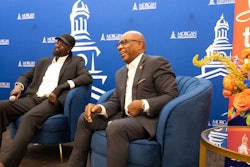American colleges and universities have made significant gains in becoming more international in scope, but the progress has hardly been universal and varies by sector, a new survey released Wednesday by the American Council on Education, or ACE, has found.
Officials at ACE say the survey — titled “Mapping Internationalization on U.S. Campuses: 2012 Edition” — identified several trends that are encouraging but also turned up some, such as the long and steady decline in foreign language instruction, that give reason for concern.
“The overall picture is quite mixed,” Patti McGill Peterson, presidential adviser for global initiatives at ACE, said during a teleconference Wednesday around the release of the report.
“We don’t want to paint a rosy picture by focusing only on positive developments,” Peterson said. The reality is some campuses have witnessed no change or even lost ground in their internationalization efforts, she said.
One of the most encouraging signs is that most campuses have invested more in internationalization efforts — or at least maintained what they were spending — at a time when fiscal constraints continue to take a toll on campus finances, Peterson said.
Specifically, at institutions that reported an accelerated focus on internationalization since 2008, funding for these efforts increased among 47 percent of survey respondents and remained steady among 27 percent.
“That’s pretty phenomenal at a time when colleges and universities are really being challenged economically and what it means for their budgets,” Peterson said.















